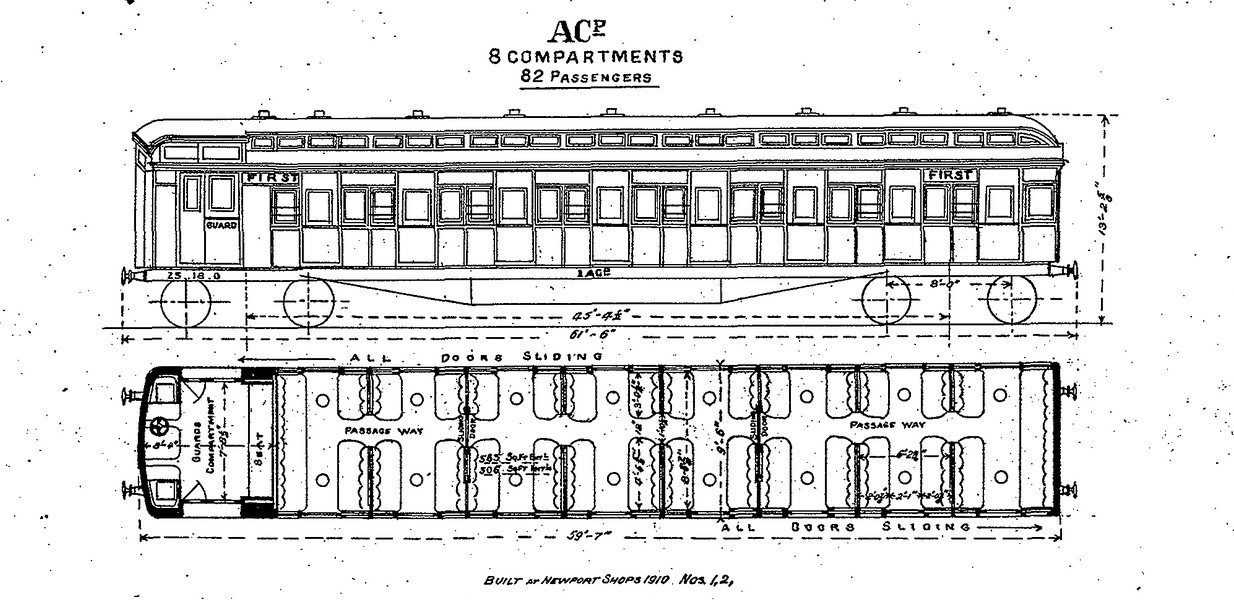

Between 1910 and 1916, one hundred and six cars entered service coded ACP. These were the new style carriages destined for electric traction service. Little did the builders of the time know that these cars would remain in service until 1984.
The class was 'ACP' which indicated First Class passenger compartments with a van compartment at one end. The 'P' indicated the type of stock: that built with a 'passageway' down the centre of the car. This was a new as the majority of stock had 'dogbox' type compartments. The number group was 1 to 106.
From the conversion details it appears cars 1 to 48 were built with standard trailer underframes, standard guards van compartments and trailer bogies. These were built between 1910 and 1913.
Cars 49 to 106 seem to have been built with heavy underframes for eventual fitting of electrical gear, guards van compartments with drivers cab but no equipment fitted, pantograph well in the roof and fitted with traction motor 'plateframe' bogies but with no traction motors attached. These cars were built during 1915/1916. This would suggest that until 1913 the type of electrical equipment was still being decided upon. By 1915, the equipment was known and cars were being built to suit. By 1916, new stock was being fitted and other conversions progressing by 1917.
Between 1915 and 1922 the class was split to other groups, most modified to electric traction service:
Some of the cars were converted to electric traction in 1917. These cars seemed to have been stored until 1919/1920 when electric service started.
By 1922 all ACP cars had been modified and recoded.